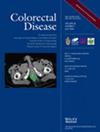The value of routine histopathological examination after haemorrhoidectomy in patients at low and high risk of anal squamous intraepithelial lesions and cancer
Abstract
Aim
Routine histopathological evaluation of haemorrhoidectomy specimens is not ubiquitous amongst surgeons as its utility is debatable. This is the first study to assess the detection rate of anal squamous intraepithelial lesions (aSIL) and anal squamous cell carcinoma (aSCC) in low- and high-risk patients.
Method
This 9-year retrospective study assessed electronic medical records of all patients who underwent excisional haemorrhoidectomy within an Australian tertiary referral hospital. Patients with sinister clinical examination findings were excluded from the study. Data collected included patient demographics, pertinent history, relevant risk factors, histopathology reports and digital rectal examination findings. Cost–benefit analysis of routine pathology submission and a city-wide survey of surgeons to ascertain current practices were also undertaken.
Results
The overall prevalence of incidental aSIL and aSCC was 27 (8.1%); 19 patients (5.7%) had low-grade squamous intraepithelial lesions (LSILs), seven (2.1%) had high-grade squamous intraepithelial lesions (HSILs) and one patient (0.3%) had aSCC. More than three out of four were detected in low-risk patients, with most cases being LSIL. Comparing low-risk and high-risk patients, the observed incidental detection rate of aSIL and aSCC was 6.8% (95% CI 4.49–10.17) and 23.1% (95% CI 11.03–52.05), respectively. Multivariate logistic regression showed a large, significant association between high-risk risk factors and detecting aSIL and aSCC (OR 3.76, 95% CI 1.32–10.68, P = 0.013). A city-wide survey of surgeons demonstrated that 28.6% do not request routine histopathological evaluation and 64.3% thought that the prevalence of sinister incidental pathology in haemorrhoids was 1% or less. The total cost of conducting routine histopathological evaluation per patient was $96.80 AUD ($59.20 EUR, $65.30 USD).
Conclusion
Given the non-negligible incidental detection rate of aSIL and aSCC in both low-risk and high-risk patients, coupled with the cost-effectiveness of histopathological examination, this study suggests that routine histopathological examination should not be restricted solely to high-risk patients. Further study of the benefit of surveillance following clinical detection in low- and high-risk patients is needed.


 求助内容:
求助内容: 应助结果提醒方式:
应助结果提醒方式:


